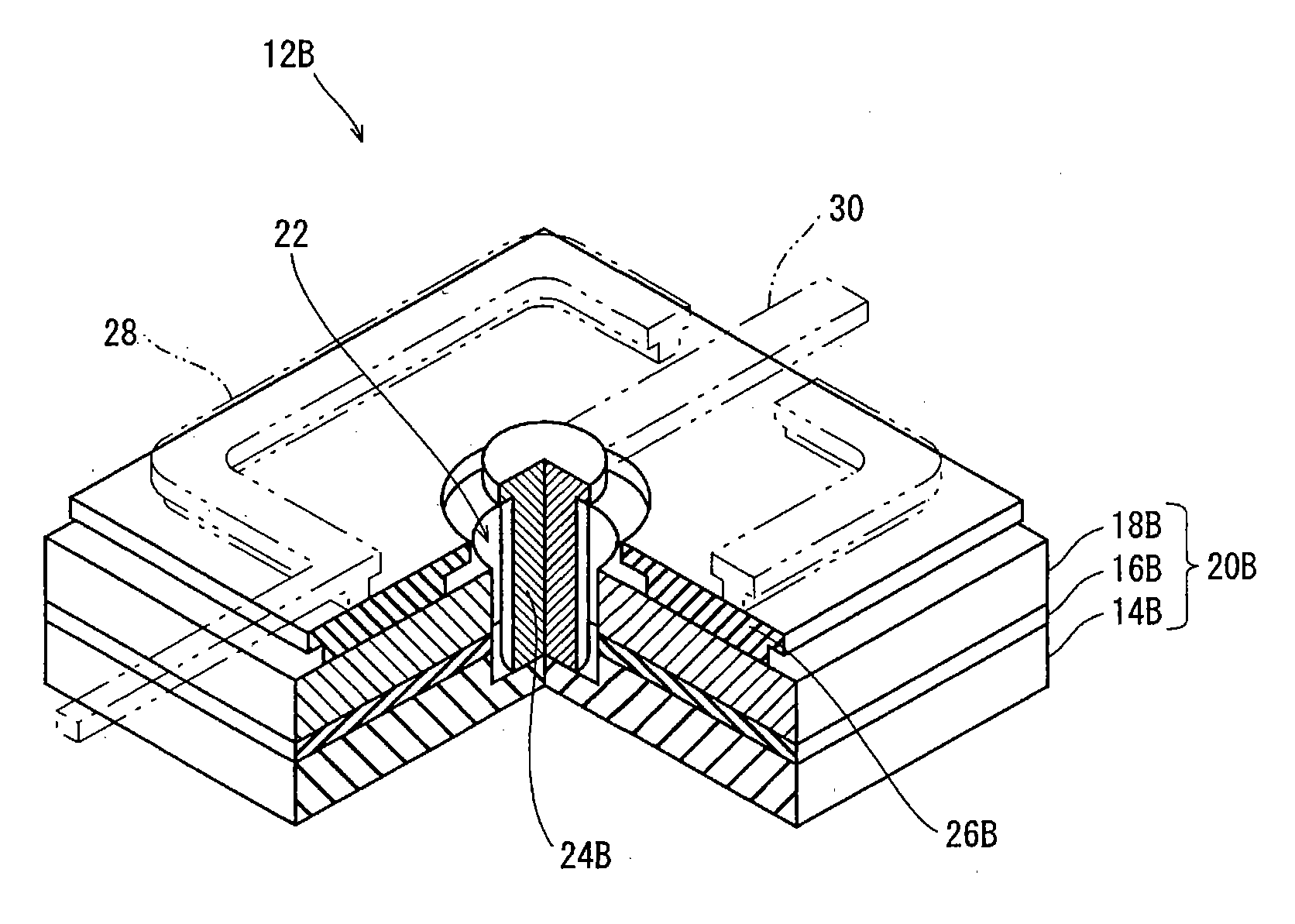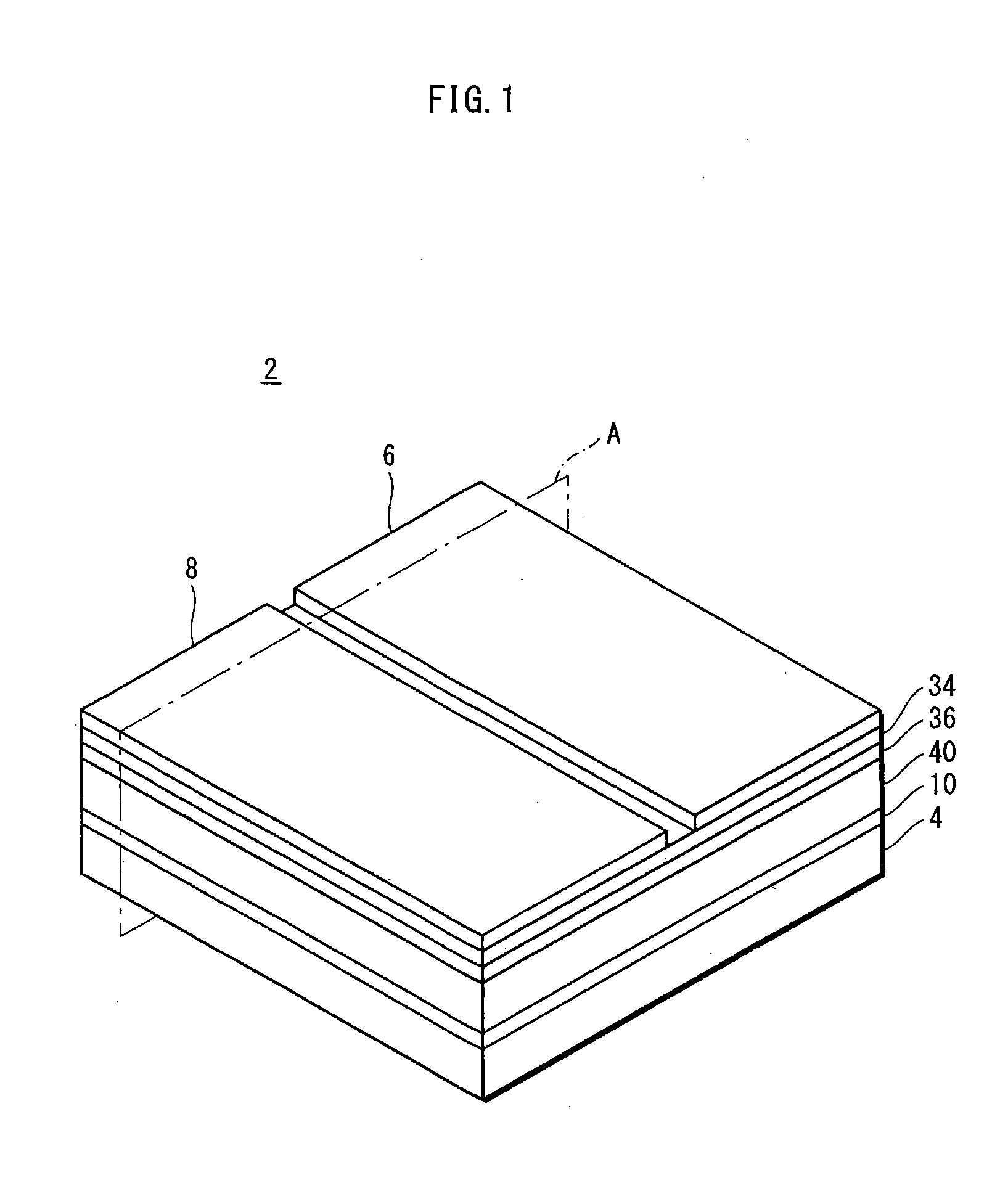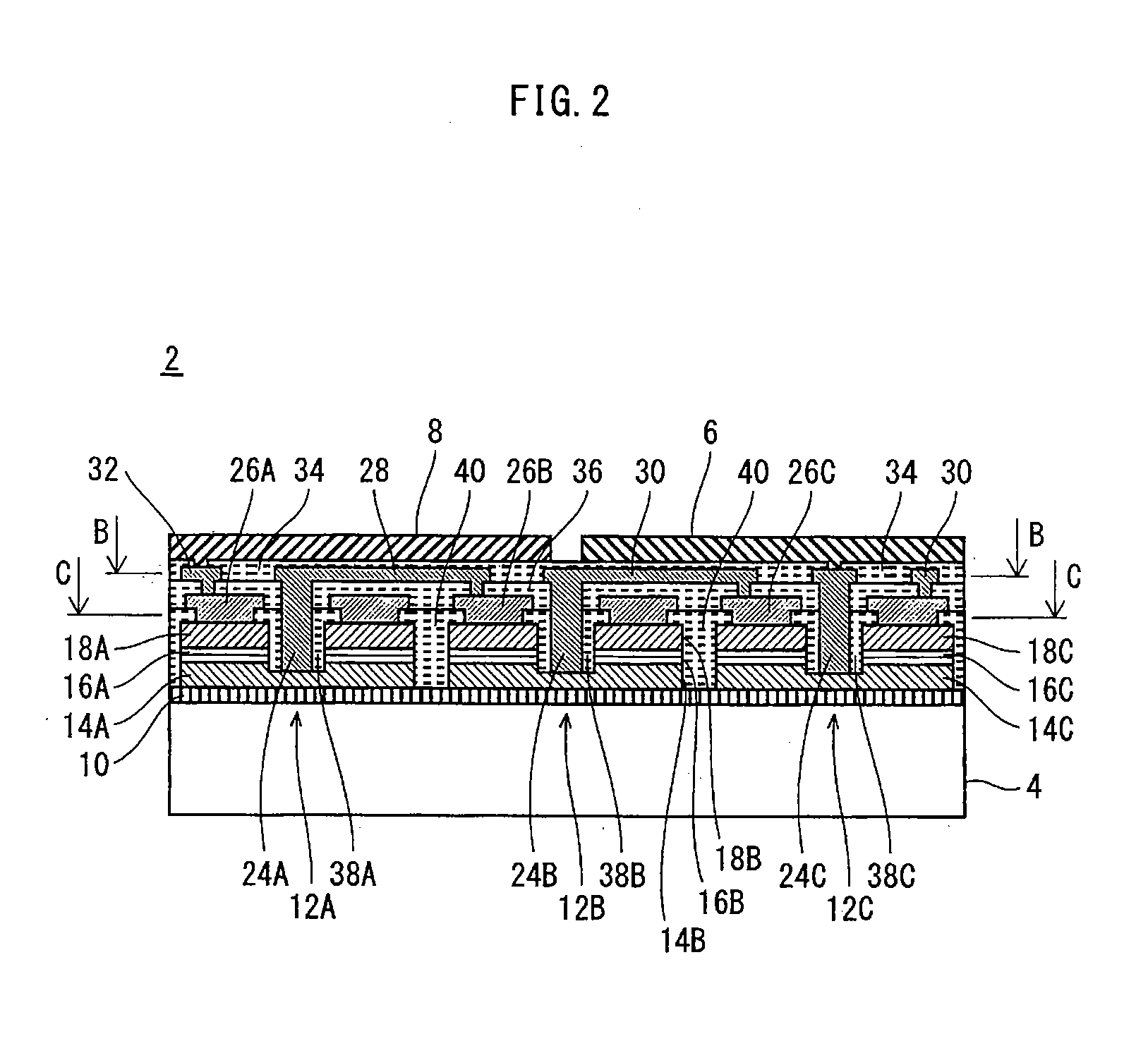Semiconductor light-emitting device, light-emitting module, and illumination device
a technology of semiconductors and light-emitting devices, which is applied in semiconductor devices for light sources, point-like light sources, lighting and heating apparatuses, etc., can solve the problem of limiting the interval between led chips on printed wiring boards to be reduced, and achieve the effect of improving luminous efficiency
- Summary
- Abstract
- Description
- Claims
- Application Information
AI Technical Summary
Benefits of technology
Problems solved by technology
Method used
Image
Examples
embodiment 1
[0045]FIG. 1 is a perspective view showing an overall structure of an LED array chip 2 as a semiconductor light-emitting device, and FIG. 2 is a cross-sectional view of the LED array chip 2 cut along the plane A shown in FIG. 1. Note that the scale ratio between the elements is not the same in each of the drawings, including FIG. 1 and FIG. 2.
[0046]As shown in FIG. 1, the LED array chip 2 has a structure in which a plurality of LEDs as light-emitting elements (not depicted in FIG. 1) are disposed between an SiC substrate 4 or the like (hereinafter simply referred to as “SiC substrate 4”) and first and second power supply terminals 6 and 8. In this example, nine LEDs are disposed on the SiC substrate 4, as described below. In FIG. 1, note that a high-resistance layer 10 and insulating films (i.e. layers) 34, 36 and 40 are shown on the side surfaces of the LED array chip 2 sandwiched between the SiC substrate 4 and the first and second power supply terminals...
embodiment 2
[0109]The LED array chip 2 pertaining to Embodiment 1 has the nine LEDs, namely LEDs 12A-12I, and these LEDs are connected in a three-series three-parallel arrangement on the SiC substrate 4 (FIG. 5B). Instead of the SiC substrate, a substrate made of a translucent material, such as a GaN substrate, an aluminum nitride substrate and a ZnO substrate, may be used. Alternatively, a substrate having a wavelength conversion function, such as YAG:Ce, may be used.
[0110]In contrast, an LED array chip 200 pertaining to Embodiment 2 has 16 LEDs, namely LEDs 202A-202Q. As shown in FIG. 13A, the LEDs are arranged in groups W1, W2, W3 and W4 each including four LEDs. Each of the groups W1, W2, W3 and W4 are connected in two-series two-parallel arrangement, in which every two LEDs are serially connected, and these two sets of serially-connected LEDs are parallely connected such that they are opposite in polarity.
[0111]Each of the LEDs 202A-202Q has the same structure as...
embodiment 3
[0143]In Embodiments 1 and 2, each LED is composed of a semiconductor multilayer film having a square shape in plan view. In contrast, an LED array chip 300 pertaining to Embodiments 3, each LED is composed of a semiconductor multilayer film having a regular hexagonal shape in plan view. The width across corner is 2 [mm] in each chip, and is its ⅓ in each light-emitting element.
[0144]FIG. 21A shows a plan view of the LED array chip 300. Note that FIG. 21A shows only seven out of the LEDs 302A-302G formed on the SiC substrate 304 with the high-resistance layer 306 therebetween. The n-electrodes 308A-308G and the p-electrodes 310A-310G of the LEDs 302A-302G are depicted in two-dot chain lines.
[0145]FIG. 21B is a cross-sectional view of the LED array chip 300 cut along the line I-I in FIG. 21A.
[0146]All the LEDs 302A-302G have the same structure, and thus the LED 302G shown on the I-I cross section is explained as a representative. In Embodiment 3, as in Embo...
PUM
| Property | Measurement | Unit |
|---|---|---|
| resistivity | aaaaa | aaaaa |
| thickness | aaaaa | aaaaa |
| thickness | aaaaa | aaaaa |
Abstract
Description
Claims
Application Information
 Login to View More
Login to View More - R&D
- Intellectual Property
- Life Sciences
- Materials
- Tech Scout
- Unparalleled Data Quality
- Higher Quality Content
- 60% Fewer Hallucinations
Browse by: Latest US Patents, China's latest patents, Technical Efficacy Thesaurus, Application Domain, Technology Topic, Popular Technical Reports.
© 2025 PatSnap. All rights reserved.Legal|Privacy policy|Modern Slavery Act Transparency Statement|Sitemap|About US| Contact US: help@patsnap.com



